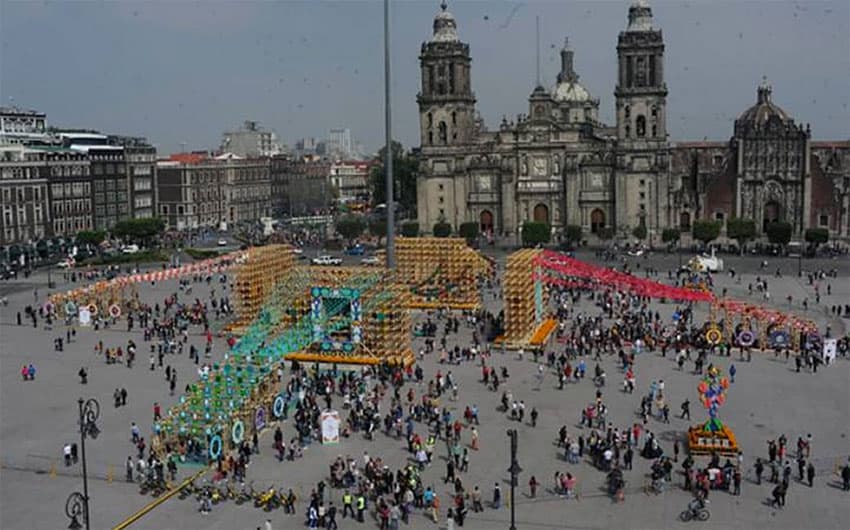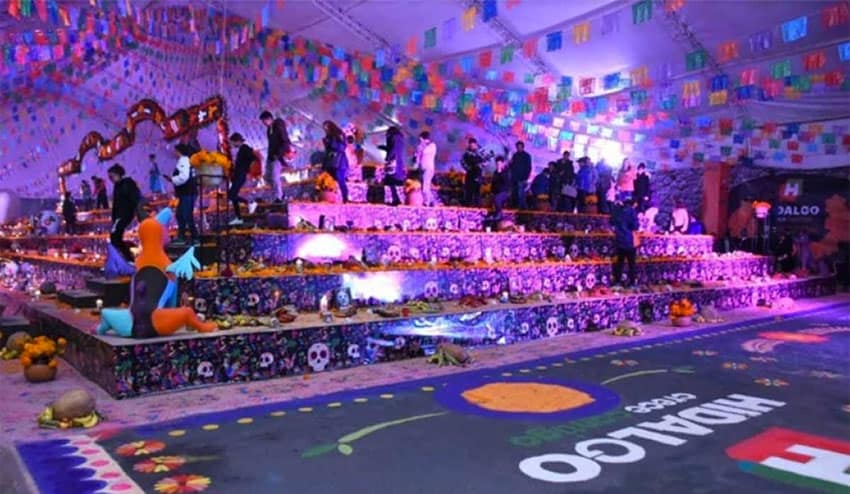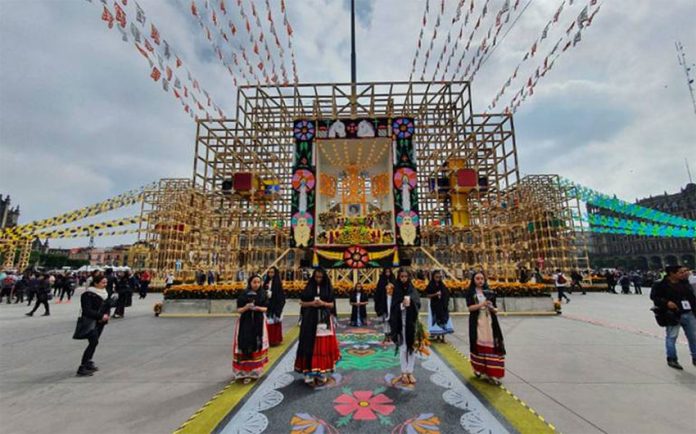The Day of the Dead mega-altar currently on display in the Mexico City zócalo was designed to represent the diversity of Day of the Dead celebrations in the north, south, east and west of the country.
This year’s “Altar of Altars” was designed by local artist Vladimir Maislin Topete, whose idea won in a vote among five other themes: “sacred diversity,” “the weavers,” “forest of life,” “uirucumani: lie in silence” and “land and liberty.”
Comprised of four 12-meter-tall wooden structures that extend out toward the four cardinal points, the altar pays homage to four distinct regional Day of the Dead celebrations.
The north branch features a raised mesquite platform that the Yaqui people of Sonora use to place their offerings of food and water. It is believed to evoke the funeral pyres used in the region before the Spanish conquest.
The altar to the south stands in honor of the Yucatán observance of Hanal Pixán, which means “food of the souls” in Mayan. It includes offerings of seasonal fruits and traditional foods like mucbipollo, a type of tamal that is cooked in an earthen oven.

The Huasteca region of San Luis Potosí, Veracruz and Tamaulipas is represented by the east arm of the altar, decorated by marigolds and copal smoke. An arch of Xantolo (name of the Day of the Dead holiday in the region) symbolizes the portal leading from the terrestrial world to the afterlife.
Opposite stands the altar representing the traditions of Cuanajo, Michoacán, reflected in an altar adorned with flowers, fruits and corn. The custom in Cuanajo is to place the offerings on small wooden horses, which take the spirits of the dead back to their earthly homes.
The altar also tells the story of the afterlife as conceived by the cosmology of the Aztecs, or Mexica, as they called themselves, who were the dominant indigenous group at the time of the arrival of the Spanish in 1519.
Their underworld consists of four worlds to which souls travel upon death: Mictlán, for those who died a natural death; Tonatiuhichan, for warriors who died in battle; Tlalocan, for those who died drowning, struck by lightning or by skin conditions; and Chichihuacuauhco, reserved for the souls of children.
The altar was inaugurated on Friday by President López Obrador, his wife Beatriz Gutiérrez, Mexico City Mayor Claudia Sheinbaum and federal Culture Secretary Alejandra Frausto. It will be on display until November 10.
It may call itself mega, but Mexico City’s altar is dwarfed by the display in the Plaza Juárez in Pachuca, Hidalgo, which has broken its own record as the world’s largest Day of the Dead altar.

Covering an area of 1,044 square meters, the record was officially recognized by Guinness World Records representative Carlos Chiapa Rojas.
Hidalgo previously achieved the record with its 2017 altar, which measured 846.48 square meters.
Sources: El Financiero (sp), El Sol de México (sp), Reforma (sp)
